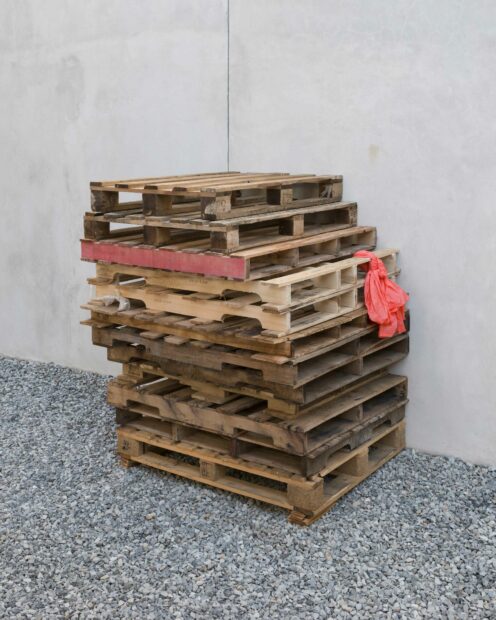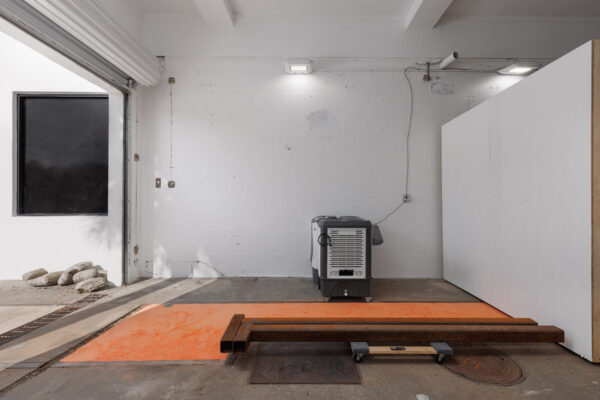Devin T. Mays is currently an artist-in-residence at Galveston Artist Residency and a CERCL Fellow in the Humanities and Arts at Rice University. Mays and I have known each other for almost ten years, and we began our conversation about colloquialisms comparing the infamous “aallreaady” of Texas and the “What up doe” of Detroit, which then very quickly shifted to art. In the below conversation, we also talk about his career transition from being a business administrator to an artist, grad school, and how being in Texas has influenced his work.
Carris Adams (CA): You primarily live and work in Chicago and came to Texas for a series of residency opportunities. As folks in Texas are getting to know you, I want to take them through a brief story of Devin T. Mays, from business admin to artist. Can you talk about the years in between undergrad and graduate school? And why did you choose to pursue an MFA and move away from the business world into the arts?
Devin T. Mays (DTM): In college, for my Bachelor’s, I tried to consider what I was good at and what would make me money to be sustainable. I chose advertising because I thought it would allow me to be creative and financially stable. But when I was out of college, and during the recession years, maintaining a job was difficult. Between that and the overall work culture, I immediately realized what I thought was sustainable and “good at” was all coming into question. At my first job, I had a supervisor, probably a few years older than me, ask me to make a deck for a client. The deck was supposed to be a comparative analysis for a very large company seeking to be a sponsor for the Olympics. When I gave my manager the deck, I included additional info he didn’t request. I thought I was being helpful… And, I thought I was proving I had the intellect and capacity to do more than what I was being asked. My supervisor wasn’t happy. His attitude was very… What’s all this other shit? He told me he didn’t want me to think, and to just do as I was told. And that was my first turning point in realizing that I didn’t want to be at a place that wouldn’t allow me to think. But I needed to keep a job, so it wasn’t as easy as stepping away and making artwork. From time to time I would make photographs and video work as a way to fulfill my need to practice, to fulfill my desire to wander and meander.
CA: Can you say more about how meandering has factored into your current work?
DTM: My desire to meander and wander led me to found objects. Objects with other concerns beyond art making. Somewhat ironically, this opened up my relationship to sculpture. It’s not about my ability to transform or animate the work. It’s about being able to take something that already has or has had utility, and offer it something else. I’m not always sure what that “something else” may be, but I can offer or make an opportunity for it to exist differently. When I choose an object, it’s not about the mechanics, kind, or locale of the object. It’s intuitive and based on feeling. Sometimes I have a heavier hand in the facilitation and organization of the objects, and sometimes not so much. That tension excites me. It allows me to stay in practice all the time.
CA: When you take things such as the wren from a parking lot or lighting fixtures and stack them inside a gallery, known to many as a place of “luxury,” what are you offering the objects? Are you then giving the objects a life of luxury where they’ll forever be on display?
DTM: I’ve never considered what I was doing to be special, ha! So it never crossed my mind that I would be offering luxury to anything. Sometimes, the best you can offer a thing is to leave it alone. My process begins with determining what comes into the studio for further study, reflection, or play. That decision is really about finding the balance between intervention and interference. How can I intervene without interfering?
When I was a BOLT Artist-in-Residence at the Chicago Artist Coalition, my grandmother passed away. These converging events, for whatever reason, seemed to have really helped me with my desire for understanding interference and intervention. Included in my BOLT exhibition was my grandmother’s wicker lamp, an orange clay dragon I made in elementary school, a concrete slab from my backyard, and a set of dumbbell plates that belonged to my brother. Using familiar objects and putting them in somewhat unfamiliar places extended their material life.
This experience helped to influence my understanding of material and immaterial. Immaterial, I began to understand as space — the thing in-between things. Material, I understood as the location of the immaterial, the place where space happens.

Devin T. Mays, “Weight, Something on Something,” 2022, concrete and stone, Reva and David Logan Center for Arts, Chicago
CA: I remember the BOLT residency happening shortly after grad school. Was this residency a move away from photography?
DTM: Yes. Toward the end of grad school, I moved toward performance, so I kept going with it. I didn’t know what I was asking from picture making anymore. And looking back, the photos I was making in graduate school were documents of a performance.
CA: Absolutely. I remember the drawings you made required the movement of your entire body and then you would photograph that work as well as the residue of the material on your hands. You experimented with materials, such as pouring liquor onto paper to make a drawing and recording yourself while doing so. All of which were performances on top of performances.
Switching gears a bit, you have been living and working in Texas for two years now. How has living here changed the work? Maybe it has not, but it’s such a different space in comparison to Chicago, Detroit, or D.C. I love that you have experience in predominantly Black places, and I’m sure that has influenced the work as well.
DTM: You’re right. All of these places are very specific. I had not thought about the fact that they all have a large Black population. Growing up in Detroit, I didn’t think it was unique for a city to be majority Black and the suburbs not to be. I assumed all cities had the same makeup. It wasn’t until I left for college that I realized my experience wasn’t everyone’s. Ha! Going to Howard University and meeting Black people from all over the country initially gave me a bit of culture shock.
I think some of that naiveté was helpful when it came to my studio practice. Symbols, metaphors, and signifiers of Blackness don’t function the same when everyone and everywhere is Black. Walking down the street and seeing discarded Newport boxes on the ground could just be material. I wasn’t thinking about the Marlboro or American Spirits that weren’t there.

Devin T. Mays, “Untitled (Unnamed),” pallets, Shims and Poncho, Sculpture Center, New York, NY, 2023
To that end, walking has always been important to me. Given the climate and topographical differences in each of these places, I’ve had to make adjustments to the orientation of my walks. As gathered materials change, so does the thing being revealed. Now that I’m in Texas, I’m learning what to do when it’s super hot outside. Growing up in Detroit and living in Chicago, I knew exactly how to deal with the cold. In Houston, I walk either early in the morning or later in the evening. I’ve tried to walk in the afternoon, but it becomes unbearable. However, due to these circumstances, picture making has returned to the practice. I didn’t know if I would ever return to the camera, but here I am, making pictures from my night walks.
Since I’ve been in Galveston, I’ve become more aware of sea level and elevation. Homes being built on stilts so that water can pass underneath them or homes sitting on cinder blocks is something I’ve never had to consider. Sculpturally, I see a lot of objects used for caution or pre-planning for flooding. I keep encountering objects that are meant to keep you away from water and off the ground, and this is different from how I’ve been thinking about things.
CA: It’s the opposite of how you’ve been thinking of things.
DTM: Totally. This kind of preparedness isn’t what I’m used to being confronted by. I guess a basement is a kind of preparedness, but it doesn’t feel as confrontational or urgent. Basements are also lounge, party, or storage spaces. The need to retreat to the basement for inclement weather can also feel like an afterthought. But here, it seems so present. The stilts holding up a house or sandbags barricading a door don’t have various uses. It’s very clear why they’re there. It’s also very clear that they always need to be there. It’s like the potential for that event to happen is always happening.
It’s been interesting to think about the practicality of those objects: stilts, sandbags, pallets, etc. I’m having to reconsider how these objects work in real time versus my studio versus a gallery. What happens to that urgent preparedness? I think oscillating between the urgent and the understated is a space I’m interested in. I want my practice to highlight the everyday-ness of that potential spaciousness.
Work by Devin T. Mays is currently on view in Skylar Haskard and Devin T. Mays: A Horseshoe Over a Door at F in Houston. The show runs from February 11 to March 31, 2024.
This interview has been lightly edited for length and clarity.



